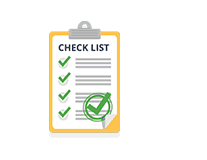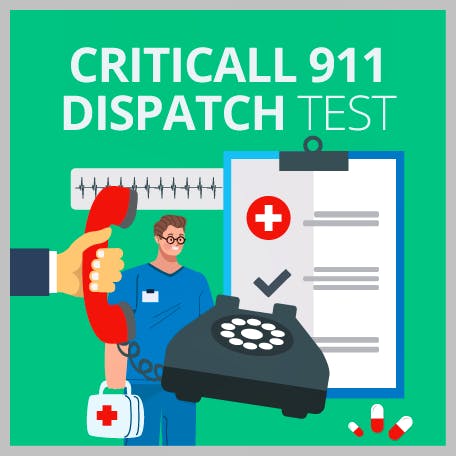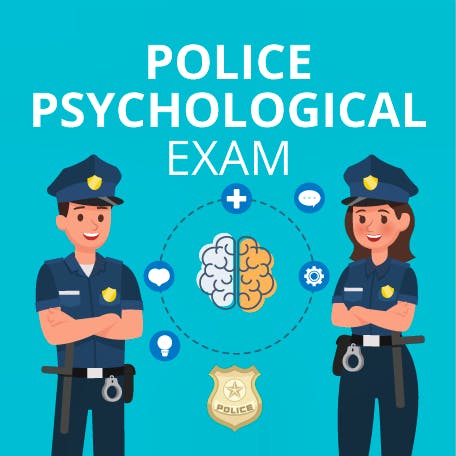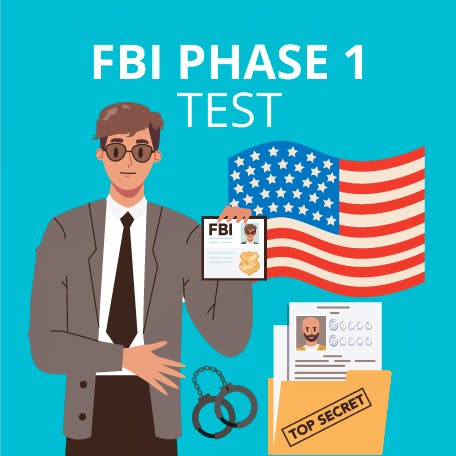How to Pass the FCTC Written Test in 2024
Updated November 18, 2023
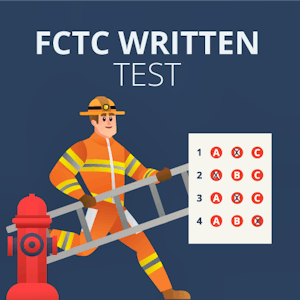
- What Is the FCTC Written Test?
- FCTC Written Test Study Guide
empty
empty
empty
empty
empty
empty
- FCTC Written Test Practice
empty
empty
empty
empty
- FCTC Written Test Prep: Tips for the Exam
- Frequently Asked Questions
- Final Thoughts

A career in the fire service is a challenging – but extremely rewarding – journey. Such an important, high-pressure job requires a high level of physical, mental and emotional skills.
As well as the necessary personality traits, you generally need a high school diploma or GED. If you have a college degree, you have a better chance of securing a role in the fire service.
You will also be required to take a series of assessments that evaluate your physical and mental strength. One of the assessments used by Californian fire departments is the FCTC Written Test. To become a firefighter in California, you must pass this entry-level test.
In this guide, we will explore what the FCTC Written Test includes and how you can prepare for success.
What Is the FCTC Written Test?
The test is administered by the Firefighter Candidate Testing Center or FCTC – a provider of resources for firefighter candidates.
The FCTC supports those interested in a fire service career by offering pre-qualification testing, mentoring and career guidance.
With locations across the state of California, the Firefighter Candidate Testing Center delivers the Candidate Physical Ability Test (CPAT) and the FCTC Written Test.
The focus of this guide is the FCTC Written Test, a rite of passage assessment for those who wish to pursue a career in the fire service. It was developed by the California Firefighter Joint Apprenticeship Committee (Cal-JAC).
The Written Test is a general knowledge assessment, with questions tailored to the profession of firefighting.
Consisting of 100 multiple-choice questions, the test takes around two and a half hours to complete. The test is designed to assess your ability to process information and think critically.
To enable candidates to take the assessment at intervals throughout the year, the FCTC Written Test is administered at least every quarter.
If there is demand for additional tests, they will be held more frequently. The assessment is taken at designated testing sites where candidates must present valid government identification to be admitted to the test.
The test can be taken as many times as needed, but no more than once in a 30-day period. There is a $50 fee for each test, with a grant program available from the California Fire Foundation for those in financial hardship.
FCTC Written Test Study Guide
To prepare for the FCTC Written Test, you should ensure you understand what the test will include.
It is important that you make use of FCTC study guide resources to familiarize yourself with the format of the test so that you can begin answering the questions as soon as you start the test.
The Written Test is divided into the following topics:
- Recall and comprehend verbal and visual information
- Apply mechanical reasoning
- Solve mathematical problems
- Recall and comprehend technical information from written materials
At the beginning of the test, you will have 30 minutes to read and study a selection of essays.
After this time, the essays will be collected and the exam will start. You will then have two hours to complete all questions.
Topics in the FCTC Written Test
Recall and Comprehend Verbal and Visual Information
In this section, you will be required to watch two short videos and then answer questions about the scenarios you have just seen. There are 20 questions in this part of the test.
Apply Mechanical Reasoning
This section of 25 questions is designed to evaluate your ability to use reasoning to identify details of specific mechanisms.
The question topics may include fluid dynamics, levers, belt and pulley systems and gears. You may also be required to interpret diagrams.
Solve Mathematical Problems
The 20 questions in this section are focused on mathematical concepts such as addition, subtraction, multiplication, division, angles, area, volume and algebra.
There may also be questions on the use of decimals, fractions, percentages and ratios.
Recall and Comprehend Technical Information from Written Materials
This section consists of 35 questions, making it the largest. It is here that you will need to recall what you read in the essays at the start of the test.
Some essays are also provided in the test booklet for you to refer to.
In this section you will need to answer questions that refer to the information in the essays.
Practice Makes Progress
One of the most beneficial ways to prepare for the FCTC Written Test is to take practice exams. You can find a range of FCTC practice test questions online that will give you an insight into what the FCTC test entails.
It is especially important to practice reading information and then answering questions about the content. This will strengthen your abilities for the Recall and Comprehend Technical Information from Written Materials section.
You can find a range of practice assessments on JobTestPrep.
You can also research and practice cognitive, logical and mechanical tests will help you to sharpen your skills ahead of the FCTC test.
What’s more, attempting a FCTC written practice test within the allotted time of two and a half hours will provide an idea of how well you perform against the clock.
If you do not manage to complete the practice exam in time, think about how you can better prepare and save valuable seconds in the real assessment.
Study a Wide Range of Written Materials
As well as completing FCTC Written Test practice papers, you should also aim to read a wide range of materials.
Your reading list should include texts about firefighting and the equipment used in the fire service, but also other topics.
Reading will sharpen your cognitive skills and widen your vocabulary. While reading, try to create summaries of what you have learned. You could even ask a friend or family member to ask you questions about the text for practice in recalling information.
Make Revision Fun
Studying for the FCTC Written Test doesn’t have to be all hard work. You can still make time to play mechanical games. They can help you visualize mechanical objects, which will help in the Apply Mechanical Reasoning section of the test.
Take It Back to Basics
Often, the simplest math concepts are the most effective. They are certainly a key component of the FCTC Written Test.
To prepare for the assessment, you should revisit the basic math topics you learned in school such as:
- Addition, subtraction, multiplication, division
- Percentages
- Angles
- Area and volume
- Ratios
To make study more engaging, you can use online quizzes and tests to refresh your math skills.
Know Your Learning Style
It is important to study with your own strengths and weaknesses in mind. You can revise in whichever way best suits you, whether that is watching videos, reading different materials or playing games.
If you are unsure of which parts of the FCTC Written Test to focus on, you can use online FCTC Written Test practice papers to identify the areas that require more effort and those that you’re already fairly comfortable with.
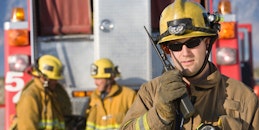
If you need to prepare for a number of different employment tests and want to outsmart the competition, choose a Premium Membership from JobTestPrep.
You will get access to three PrepPacks of your choice, from a database that covers all the major test providers and employers and tailored profession packs.
Read the following passage and answer the question at the end.
Once upon a time in a quiet, picturesque village, there lived a young woman named Emily. She was known for her adventurous spirit and love for exploring. One sunny afternoon, while hiking in the nearby forest, Emily stumbled upon an ancient-looking key half-buried in the dirt. It was ornate and mysterious, with intricate engravings on its surface.
Intrigued, Emily decided to keep the key and brought it home. Over the next few days, she couldn't help but wonder what it might unlock. She asked the villagers if they knew anything about it, but no one could identify its purpose.
Emily spent weeks searching for clues, studying old books and even consulting with historians from distant towns. Eventually, she discovered that the key was rumored to unlock a hidden door in an abandoned castle deep within the forest, a castle that was said to hold a long-lost treasure.
With newfound determination, Emily returned to the forest, using the key to unlock the castle's door. Inside, she found a room filled with glittering jewels, ancient artifacts and a dusty old book. It turned out to be the diary of the castle's last inhabitant, who had hidden the treasure away to protect it from thieves.
Emily carefully collected the treasure, and the diary revealed the history of the village and the castle's role in it. She became a local hero, using her newfound wealth to preserve the village's history and improve the lives of its inhabitants.
What did Emily discover when she used the ancient key to unlock the hidden door in the abandoned castle, and how did she use the knowledge gained from the diary she found there?
a) Emily found a room filled with paintings and ancient scriptures, and she used the knowledge to teach the villagers about their past.
b) Emily found a room filled with old weapons and armors, and she used the knowledge to form a village defense team.
c) Emily discovered a room filled with glittering jewels and ancient artifacts, along with a dusty old book. She used the diary to understand the village's history and then utilized the treasure to preserve the village's heritage and enhance its inhabitants' lives.
d) Emily found a room with a map leading to another hidden treasure, and she used the knowledge to embark on another adventure.
If you have a wheel with 12 equally spaced spokes and you push on one spoke, what will happen to the wheel?
a) The wheel will rotate in the direction of the push
b) Only the spoke you pushed will move, while the wheel remains stationary
c) The wheel will levitate
d) The wheel will become misaligned and wobble
You’re buying new boots from the summer sale. You decide to buy two pairs of boots, each costing $40. The sale has a 20% discount off each pair of boots.
What is the total you will pay?
a) $80
b) $75
c) $64
d) $60
Read the following passage on how fire hoses work, then answer the question at the end.
- Water Source: Fire hoses are connected to a water source, like a fire hydrant or a fire engine's water tank. This ensures a steady supply of water.
- Pressure Generation: Fire engines have pumps that create high pressure within the hose. This pressure is essential for pushing water forcefully through the hose and onto the fire.
- Hose Construction: Fire hoses are made of strong and flexible materials designed to withstand heat and pressure. They are typically reinforced with layers of fabric or rubber.
- Nozzle Control: At the end of the hose, there's a nozzle that can be adjusted by firefighters. They can change the nozzle settings to control the stream of water, allowing for variations from a focused jet to a wide spray.
- Firefighting Operation: Firefighters aim the hose at the fire and use the nozzle to select the appropriate spray pattern.
The high-pressure stream of water serves several purposes:
- It cools down the flames by absorbing heat.
- It smothers the fire by displacing oxygen, which flames need to burn.
- It can create a barrier to prevent the fire from spreading to other areas.
- Maneuverability: Fire hoses are designed to be portable and easy to handle so that firefighters can move them around effectively.
- Backup Systems: Fire engines often carry additional firefighting agents, such as foam or chemicals, that can be mixed with water in the hose to tackle specific types of fires, like those involving flammable liquids.
In essence, fire hoses use pressurized water to extinguish fires. They rely on a combination of high pressure, hose durability, nozzle control and skilled firefighting techniques to effectively combat different types of fires and save lives.
A fire hose delivers a high-pressure stream of water. What are the three purposes of the water stream as outlined in the text?
a) It cleans the surrounding area, helps firefighters slide, and it alerts other firefighters
b) It cools down the flames, provides hydration to firefighters, and cleans the burnt debris
c) It cools down the flames, smothers the fire by displacing oxygen, and creates a barrier to prevent the fire from spreading
d) It signals the start and end of firefighting operations, cleans the fire truck, and serves as a pathway for firefighters.
FCTC Written Test Prep: Tips for the Exam
The FCTC Written Test can seem like a daunting prospect, as it is the assessment that stands between you and your dream career in the fire service.
However, it is important to know that it is very possible to pass the test with some preparation.
As part of your FCTC Written Test prep make use of practice questions and FCTC Written Test study guide resources.
As well as creating a study schedule to cover the test content, remember the following tips to prepare for success.
Step 1. The Test Is Not Trying to ‘Trick You’
The FCTC Written Test is not a trick and so you should take it at face value. Trust that the test is there to measure your capability and ensure you are ready for a career in the fire service.
Step 2. Read the Instructions Carefully
It is important that you read each question carefully so you can answer accurately.
Step 3. Be Mindful of the Time
You will have two hours to complete the four sections. This may seem like a long time now, but it can go quicker than expected when you are answering lots of questions.
Keep an eye on the time and make sure you leave enough time for the last sections.
Step 4. Trust Your Intuition
If you are immediately drawn to an answer, then it is probably correct. Trust your gut and choose the FCTC Written Test answers that make the most sense to you.
Step 5. Pick the Most Accurate Answers
If you are stuck between FCTC Written Test answers, choose the one that seems the most accurate to you through a process of elimination.
The FCTC (Firefighter Candidate Testing Center) written test is a standardized examination designed to evaluate the aptitude and skills of candidates aspiring to become firefighters.
This examination assesses a candidate's ability in various areas such as mathematics, reading comprehension, and mechanical reasoning, ensuring they have the foundational knowledge required for a career in firefighting.
The passing score for the FCTC written test varies based on the standards set by individual fire departments or agencies. However, it's generally recommended that candidates aim for a score above 70% to increase their competitiveness in the hiring process.
The FCTC written test score typically remains valid for 12 months from the date of testing. However, candidates should always check with the specific fire department or agency they're applying to, as some might have different validity periods or may require more recent test scores.
To schedule an FCTC test, candidates should visit the official FCTC or CPS HR Consulting website, where they can find available test dates, locations, and the registration process. It's advisable to book well in advance as slots can fill up quickly, especially during peak hiring seasons.
The FCTC written test typically consists of a set number of questions designed to assess a candidate's abilities in various categories, such as reading comprehension, mathematical reasoning, and mechanical aptitude.
The exact number of questions can vary, but candidates should prepare for around 100–150 questions, ensuring a comprehensive evaluation.
Several resources are available for FCTC written test preparation. Candidates can start with the official FCTC or CPS HR Consulting website, which often provides study guides or sample questions.
Additionally, there are third-party books, online courses, and practice tests tailored to help candidates prepare effectively for the examination.
As of my last update in January 2022, the FCTC written test is primarily administered in-person at designated testing centers. However, due to unforeseen circumstances such as global events or technological advancements, modes of test administration can change.
It's always best to check with the official FCTC or related agency's website for the most current information.
Final Thoughts
Firefighting is a demanding career and the FCTC Written Test is an important part of the initial fire service application process in California. It is designed to assess your critical thinking skills and how you process information.
While the test is not easy, with proper FCTC test prep including making use of a FCTC study guide and effective time management you can do well on the test and get one step closer to a firefighting career in California.









